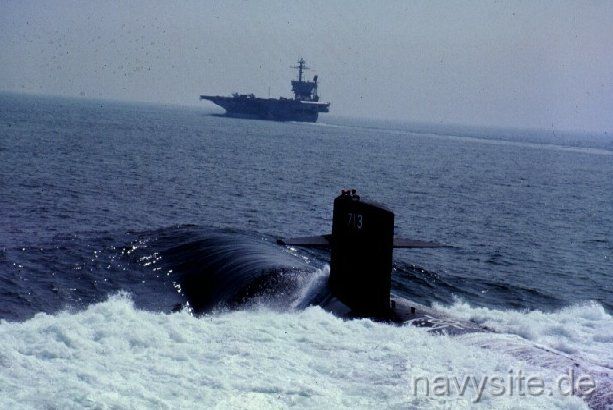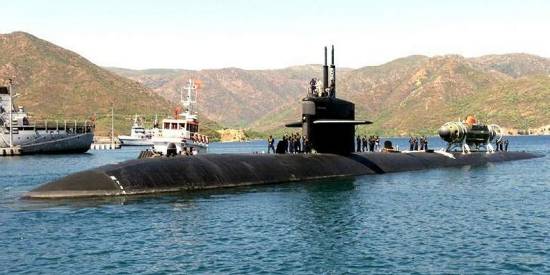|
Posted on 02/11/2005 10:54:26 PM PST by snippy_about_it
|
|
 are acknowledged, affirmed and commemorated.
|

| Our Mission: The FReeper Foxhole is dedicated to Veterans of our Nation's military forces and to others who are affected in their relationships with Veterans. In the FReeper Foxhole, Veterans or their family members should feel free to address their specific circumstances or whatever issues concern them in an atmosphere of peace, understanding, brotherhood and support. The FReeper Foxhole hopes to share with it's readers an open forum where we can learn about and discuss military history, military news and other topics of concern or interest to our readers be they Veteran's, Current Duty or anyone interested in what we have to offer. If the Foxhole makes someone appreciate, even a little, what others have sacrificed for us, then it has accomplished one of it's missions. We hope the Foxhole in some small way helps us to remember and honor those who came before us.
|
|
     |

February 12, 2005
 If you are following the Bible reading schedule in Our Daily Bread, you've been in the book of Leviticus lately. Leviticus may be one of the least-read books in the Bible, and you might be wondering what its purpose really is. Why all those laws and rules about clean and unclean animals? (ch.11). What message was God giving to the Israelites-and to us?
If you are following the Bible reading schedule in Our Daily Bread, you've been in the book of Leviticus lately. Leviticus may be one of the least-read books in the Bible, and you might be wondering what its purpose really is. Why all those laws and rules about clean and unclean animals? (ch.11). What message was God giving to the Israelites-and to us?
Bible commentator Gordon Wenham says, "As the laws distinguished clean from unclean animals, so the people were reminded that God had distinguished them from all the other nations on earth to be His own possession. . . . Man's highest duty is to imitate his creator."
Five times in Leviticus God says, "Be holy, for I am holy" (11:44-45; 19:2; 20:7,26). And forty-five times He says, "I am the Lord" or "I am the Lord your God." One of the most important themes in the book is God's call for His people to be holy. Jesus echoed that theme when He said, "You shall be perfect as your Father in heaven is perfect" (Matthew 5:48).
As you read Leviticus 11, remember that you are special to God and are to "proclaim the praises of Him who called you out of darkness into His marvelous light" (1 Peter 2:9).
We need the Leviticus reminder every day. -Anne Cetas
Study the Bible to be wise; believe it to be safe; practice it to be holy.

On This Day In History
Birthdates which occurred on February 12:
1211 Henry VII Roman catholic German king (1220-35)
1585 Caspar Bartholin Malmö, physician, theologian, writer on anatomy
1588 John Winthrop English attorney/puritan/1st Governor of Massachusetts
1768 Francis II Florence Italy, last Holy Roman emperor (1792-1806)
1791 Peter Cooper industrialist/philanthropist (Cooper Union)
1809 Charles Darwin Shrewsbury England, discovered evolution (Origin of species)
1809 Abraham Lincoln Hodgenville KY, (R) 16th President (1861-65)
1828 Robert Ransom Jr Major General (Confederate Army), died in 1892
1838 Charles Carroll Walcott Brevet Major General (Union volunteers), died in 1898
1880 John Llewellyn Lewis union leader (United Mine Workers, 1920-60)
1893 Omar Bradley General of Army WWII "The GI General"
1904 Ted Mack Denver CO, TV host (Original Amateur Hour)
1914 Gordon Tex Beneke saxophonist/bandleader/vocalist (Glenn Miller Orchestra)
1915 Lorne Greene Ottawa Canada, actor (Bonanza, Battlestar Galactica)
1919 Forrest Tucker Plainfield IN, actor (O'Rourke-F Troop, Dusty Trail)
1923 Franco Zeffirelli Florence Italy, movie director (Romeo & Juliet)
1926 Joe Garagiola St Louis MO, baseball player/sportscaster/host (Today Show)
1930 Arlen Specter (Senator-Rino-PA, 1981- )
1930 Gerhard Rühm writer
1931 Constance A Morella (Representative-R-MD)(rino)
1934 Bill Russell Monroe LA, NBA star (Boston Celtics, Olympics-gold-56)
1935 Ray Manzarek keyboardist (The Doors-Light My Fire, Unknown Soldier)
1936 Joe Don Baker Groesback TX, actor (Eischied, Walking Tall, Fletch)
1938 Johnny Rutherford auto racer
1944 Moe Bandy Meridian MS, country vocalist (Just Good Ol' Boys)
1956 Paula Zahn Omaha NB, news anchor (ABC, CBS This Morning)
1958 Arsenio Hall comedian (Alan Thicke, Arsenio, Coming to America)
1980 Christina Ricci actress (Wednesday-Addams Family, Mermaids, Casper)
Dang nab night shift 'puter never works right when you want it to
Have ever considered it might be....THEM? You never know when THEY will strike.
To paraphrase Matthew Ridgeway,
'Never get involved in a land war in Asia'
Inquiring minds want to know. :-)

USS FRESNO was the 4th ship in the NEWPORT - class of Tank Landing Ships. Her last homeport was San Diego, Ca. FRESNO is currently berthed at the Naval Inactive Ship Maintenance Facility (NISMF), Pearl Harbor, HI.
Morning E.G.C.
Thanks for the update on your dad. I'll keep him in my prayers.
Good Morning GailA.
It surprised me when the Navy started naming ships after living people.
Morning Mayor
Hi Feather.

Seems these guys just keep coming back to get the butts kicked every so often.
Morning Sam, how's the business doing?
William Wordsworth
SIEGE OF VIENNA RAISED BY JOHN SOBIESKI
FEBRUARY 1816
OH, for a kindling touch from that pure flame
Which ministered, erewhile, to a sacrifice
Of gratitude, beneath Italian skies,
In words like these: 'Up, Voice of song! proclaim
'Thy saintly rapture with celestial aim:
'For lo! the Imperial City stands released
'From bondage threatened by the embattled East,
'And Christendom respires; from guilt and shame
'Redeemed, from miserable fear set free
'By one day's feat, one mighty victory.
'--Chant the Deliverer's praise in every tongue!
'The cross shall spread, the crescent hath waxed dim;
'He conquering, as in joyful Heaven is sung,
'HE CONQUERING THROUGH GOD, AND GOD BY HIM.'
It appears I've made a "slight" Error.
Jan III Sobieski: 1674-1696
And The Siege of Vienna of 1683
One of the most important battles of the 17th century was the battle of Vienna, which was fought on September 12, 1683. The outcome of this battle would have a profound effect on the future of Eastern, if not of all, Europe. The Battle of Vienna was mainly fought by the Turks, with about 15,000 Tatars on their side, against a less numerous combination of Polish, German, and Austrian forces. The Turkish forces were led by the Grand Vizier Kara Mustafa, an ambitious man, but who wasn't a very good general judging by the number of battles he had lost. The opposing forces were led by Jan Sobieski. On May 21, 1674, Sobieski was elected king as John III by the Diet. This was after the death of King Michael Wisniowiecki the previous year, on November 10. Sobieski was an intelligent, talented, and a brave man. He was also a patriot of Poland and always wanted the best for his country.
http://campus.northpark.edu/history/WebChron/EastEurope/ViennaSiege.CP.html
"1683 A Christian Army, led by Charles, the Duke of Lorraine and King John Sobieski of Poland, routed a huge Ottoman army surrounding Vienna."
Reminds me of the Expulsion of the moslem invaders of Spain, called the Reconquista, 718 AD to 1492 AD (took 772 years), and the Great Siege of Malta, 1565, and the naval battle of Lepanto, 1571. The struggle continues. Machines change, people don't.
This sure does answer a lot of questions I had but never the time to research. What an honor to have the Navy's finest named after you or your homes. Here are some of my favorites . . . no particular reason ;^)
USS Austin (LPD 4) 
USS San Antonio (LPD 17)

USS Houston (SSN 713) 
USS Dallas (SSN 700) 
USS Texas (BB 35) 
[Seems to something wrong with FR this AM so hopefully these all loaded]


Disclaimer: Opinions posted on Free Republic are those of the individual posters and do not necessarily represent the opinion of Free Republic or its management. All materials posted herein are protected by copyright law and the exemption for fair use of copyrighted works.